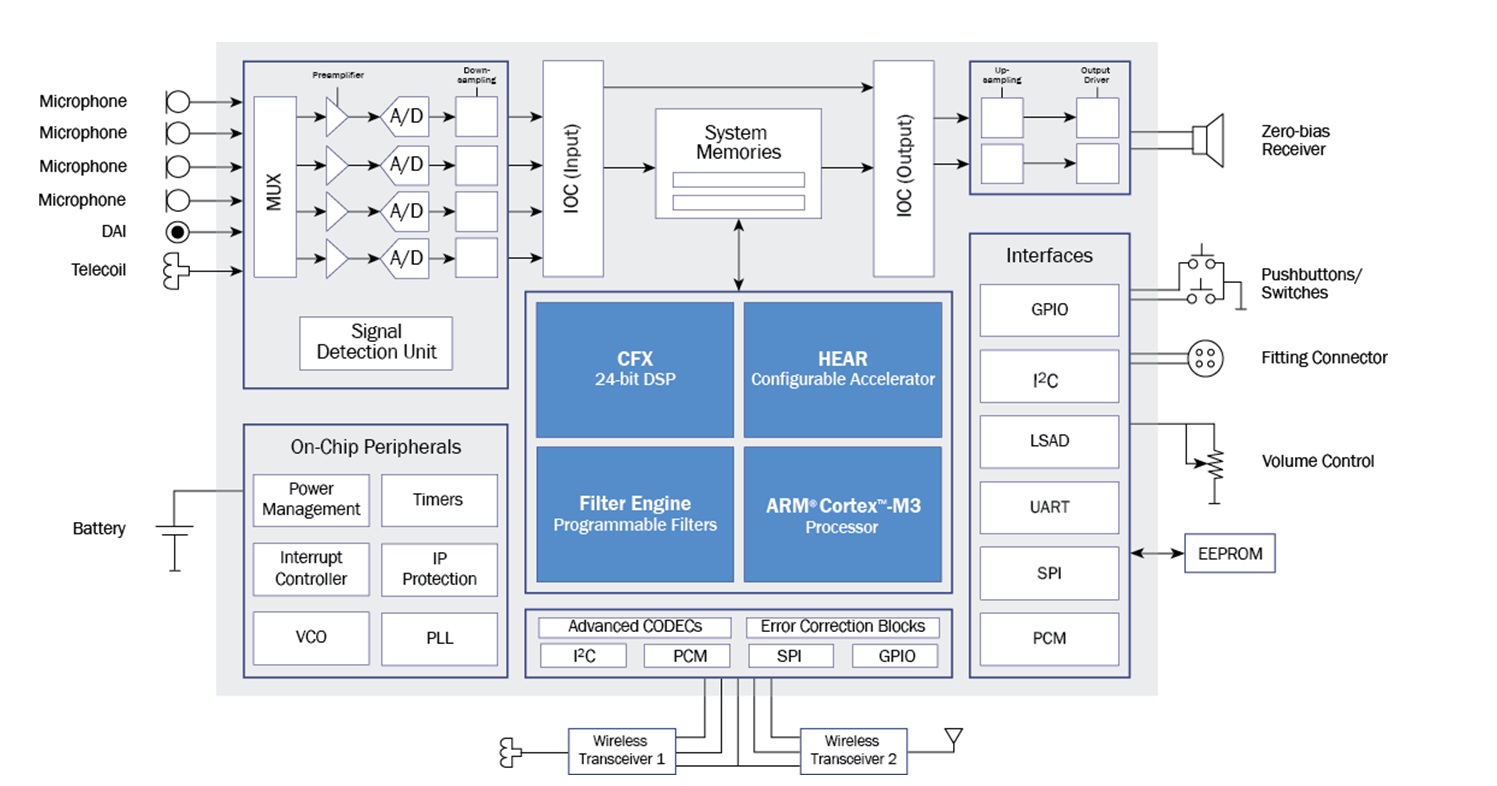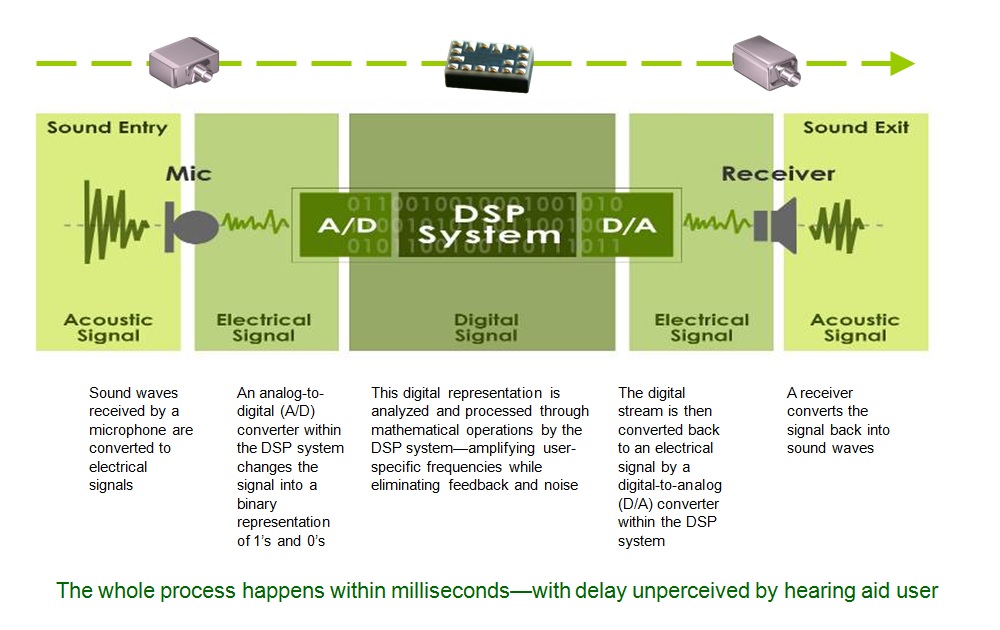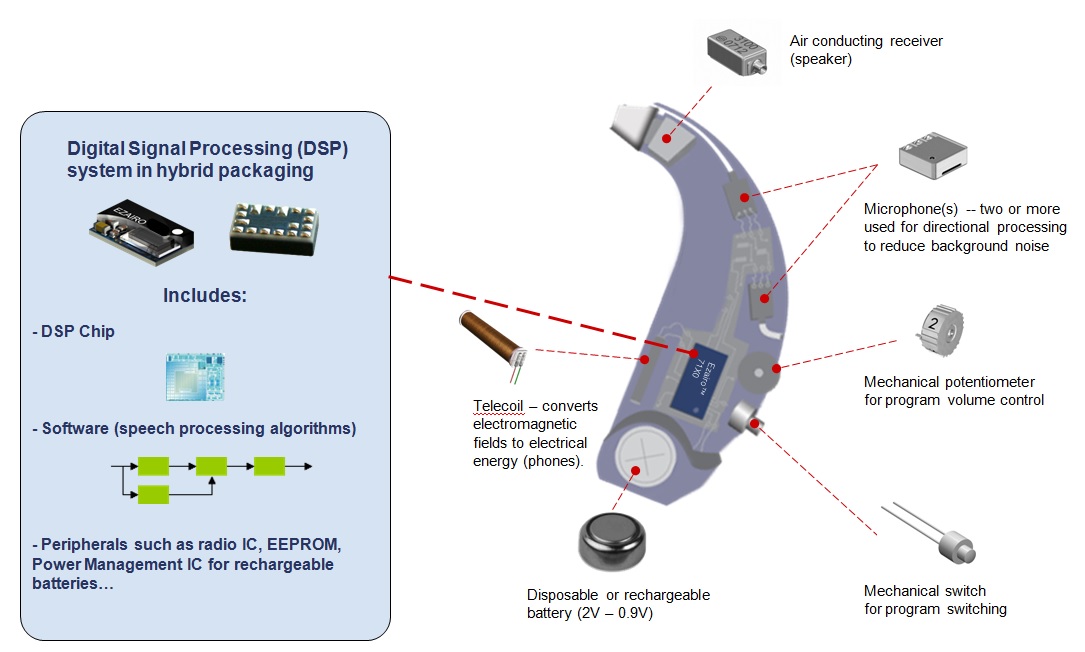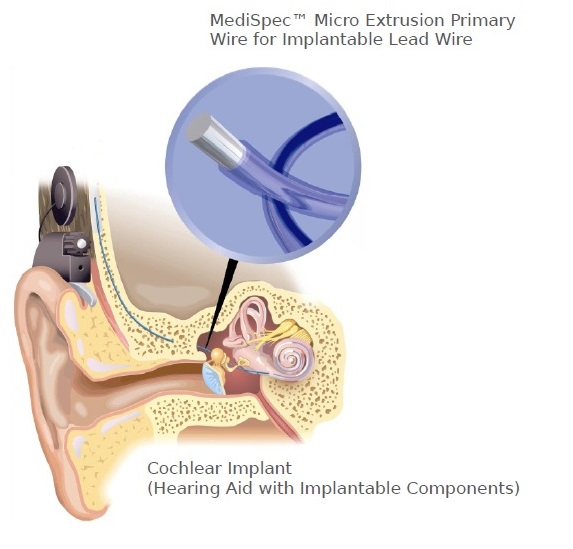Bigger brains for hearing aids
In this ES Design magazine article, Sally Ward-Foxton discusses how processing power can help make hearing aids more attractive to the hearing impaired.
Although 18% of adults aged 45-64 are hearing impaired, the market for hearing aids worldwide was just 12 to 12.5 million users in 2013 (based on industry sales). That’s a tiny proportion of those that are hearing impaired using hearing aids, especially considering that the percentage goes up for adults over 65. In fact, the latest statistics put the figure at around 1 in 5 people who could benefit from the technology that are actually using it. So, why aren’t hearing aids more prevalent?
Well, for a start, the price of a premium hearing aid in the US can be $3,000 - $4,000. This makes them inaccessible to many. The other main factor is stigma attached with ageing, says Christophe Waelchli, Product Manager for hearing health, consumer health and portable audio at ON Semiconductor.
“Wearing hearing aids might be perceived as a sign of the effect of age,” Waelchli says. “Many people will emotionally associate getting a hearing aid with a personal admission of old age and will understandably resist getting their first one.”
Despite the stigma attached to these devices, the market is continuing to grow at a steady 4% year-on-year, down to the overall ageing of the global population, and the increase in hearing impairments due to noise exposure and health factors like diabetes. The market also now includes emerging economies like China and India, where people have more disposable income than ever before, bringing medical devices like hearing aids into reach for the first time.
One of the key remaining challenges is to encourage people to adopt hearing aids earlier - the average age for first use remains at 69-70, despite attempts to promote earlier adoption. Hearing aid manufacturers are turning to the latest developments in electronics to help encourage those with hearing impairments to fully accept the technology.
“Once a new patient tries a hearing aid for the first time, different factors come into play to determine whether they will become a regular user and a repeat customer,” says Waelchli.

Figure 1: The Ezairo 7110 hearing aid SoC features five times more processing power than its predecessors, allowing more advanced hearing aids to be developed
These factors are broadly based on two things: acceptable sound quality and a discreet physical size. ON Semiconductor is hoping to address both of these issues with its Ezairo 7110 hearing aid platform (Figure 1).
Design challenges
A modern digital hearing aid takes acoustic waves from a microphone, converts them to digital signals with an A-to-D converter, processes the signal inside a DSP using an algorithm of some sort, then performs the reverse conversion back to analogue and back into sound waves via a receiver (Figure 2). The idea is that these stages happen within milliseconds so that the user doesn’t perceive any delay between what they see and what they hear.

Figure 2: How a modern digital hearing aid works
The structure of a typical behind-the-ear hearing aid (the most prevalent type) is shown in Figure 3, including the Ezairo 7110, a DSP-based system on chip (SoC) designed for this application. It features a quad-core 24-bit open-programmable CFX DSP core alongside a HEAR configurable accelerator engine and a new Filter Engine which implements efficient time-domain filters. Adding non-volatile memory and a wireless transceiver turns this IC into a complete, powerful hardware platform.
“Adding processing power helps established manufacturers deploy innovative features that can differentiate their products and provide a more refined user experience for the patient in many ways,” Waelchli says.

Figure 3: The structure of a typical behind-the-ear hearing aid
One of these ways is that the hearing aid can detect and adapt to more nuanced changes in the listening environment using auditory scene analysis algorithms. Aside from the core dynamic range compression algorithm, which remaps the normal listening range to the specific range of an individual with hearing loss, other common algorithms include feedback cancellation, which prevents the ‘howling’ that happened with older generation hearing aids, and impulsive noise suppression, whereby a loud slamming door or a dropped item will not become dangerously loud through a hearing aid. The Ezairo 7100 is open-programmable for manufacturers to add their own sophisticated algorithms, too.
“A multi-core architecture delivers significantly more computing capability while maximising battery life,” Waelchli adds. “Four cores running cool are much more efficient than one core running hot. We can see the same trend in processors in many applications, including computers and smartphones.”
Technology is also helping shrink the size of hearing aid applications. Clever chip level integration and advanced packaging technologies help minimise the footprint of the electronics to less than 10mm2. Smaller process nodes make electronic devices smaller, but they also help reduce power consumption, meaning batteries can be smaller too. Today’s devices must consumer less than 1mA at 1.25V operating voltage. The widespread behind-the-ear types are becoming receiver-in-canal types, in which the receiver sits inside the ear canal, and more discreet in-the-ear types are becoming popular too.
The future
What might the hearing aid of the future look like? Waelchli offered this: “We believe that hearing aids will be increasingly connected to consumer electronic devices with a wireless link,” he explained. “Hearing aids will be regarded as a bridge between our gadgets and someone’s experience of hearing.”
Wireless technologies using the 2.4GHz band could allow hearing aids to exchange data with a remote device to allow the user to watch TV or talk on the phone using their hearing aid.
“Wireless connectivity allows hearing aid users to experience advances in technology in the same way as anyone else,” he said, adding that there has been a lot of discussion in the industry about a 2.4GHz Bluetooth low energy (Bluetooth Smart) standard for hearing aids.
Near-field communication is also used to allow data exchange from one ear to the other. This is used for binaural processing to increase voice intelligibility and help hearing aid users identify the location of a sound source. The specific technology used is Near-Field Magnetic Induction (NFMI); standard 2.4GHz radio signals are heavily attenuated by someone’s head while magnetic waves pass unimpeded. ON Semiconductor has designed the Exairo 7110 to connect to one or two radios simultaneously.
Looking into the far future, with the physical size of electronics continuing to shrink, will the industry move in the direction of implantable devices? (see implantable wires section below).
“We expect that implantable hearing aids will continue to be used for very specific pathology only,” Waelchli predicted. “Although our DSPs are currently used in cochlear implants, they can be very expensive and require invasive surgery, limiting the procedure to those who suffer from profound hearing loss.”
Implantable wires
Implantable technologies are also coming on in leaps and bounds. For example, TempFlex, recently acquired by Molex, makes MediSpec wire from biocompatible conductor materials that are suitable for use in cochlear implants, amongst other medical applications (Figure 4). These surgically implantable leads are available in 36 to 50 AWG with conductor wall thicknesses down to 0.0127mm.

Figure 4: Tiny wires can be made reliable enough for implantable devices, like this MediSpec wire from Molex
A proprietary extrusion process is used to apply insulation around the wire, ensuring accurate concentricity and eliminating any tiny pin-holes that can affect reliability. This insulation is, of course, completely inert.






